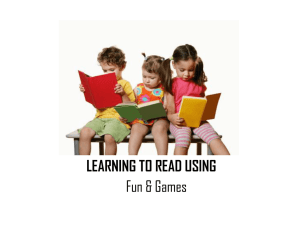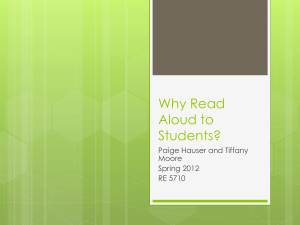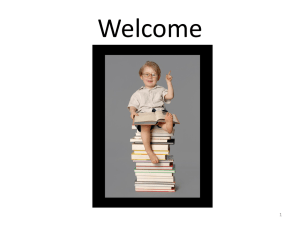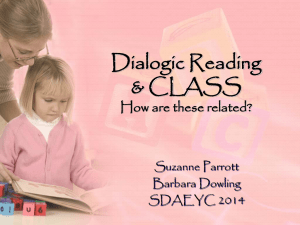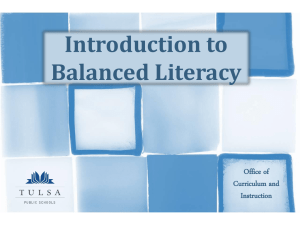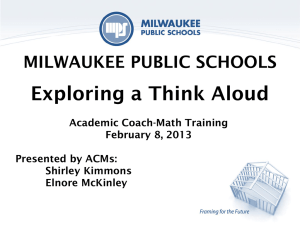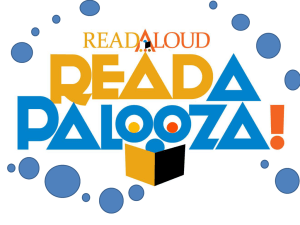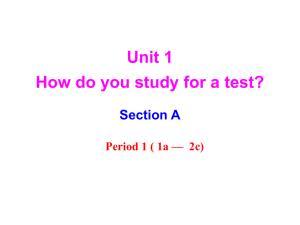Power of Read Alouds
advertisement
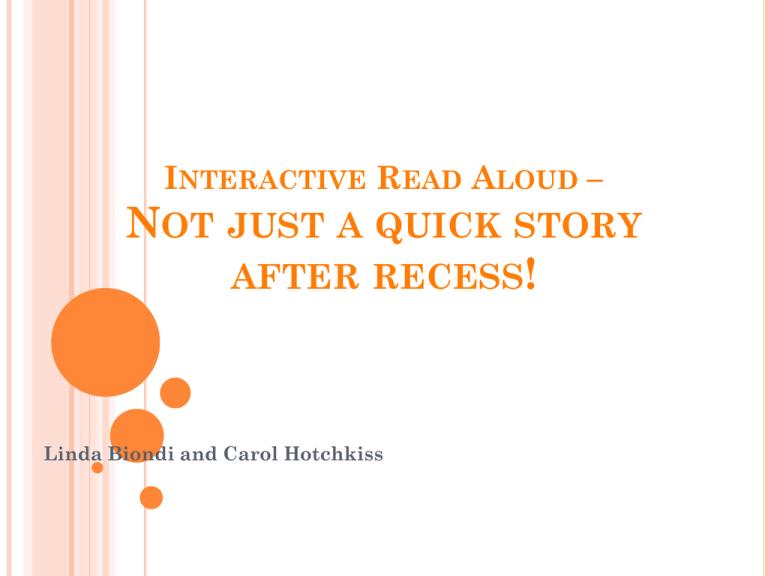
INTERACTIVE READ ALOUD – NOT JUST A QUICK STORY AFTER RECESS! Linda Biondi and Carol Hotchkiss PROTOCOL REMINDER WHAT IS A READ ALOUD? 1. 2. 3. 4. Teacher read alouds are a way to get kids to quiet down after recess. It is better to play a CD of an actor reading a book than to read aloud myself, because the actor will do it better than a teacher can. Teacher read-alouds are planned oral readings of a range of texts. They are a vital part of daily literacy instruction in all classrooms. WHY READ ALOUD? • Teachers can use read-alouds to: – – – – – – – – – – develop their student's background knowledge, free students from decoding to become active listeners, create meaning from spoken text through visualization enrich student vocabulary, stimulate their interest in high-quality literature, increase their comprehension skills, foster critical thinking, model strategies that children can use during their own independent reading, initiate critical conversations through the questions they pose, prompt children to think and talk about social issues that impact their daily lives. WHAT IS IMPORTANT? • • • • • • Choose appropriate texts for students based on their interests and social/emotional level. Preview and practice the text before reading. Establish a clear purpose or focus for the read aloud. Model fluent, expressive reading. Stop periodically to thoughtfully wonder and pose questions. Link to independent reading and writing. “In the teaching of reading there are only a handful of things that everyone agrees are essential. Perhaps the most important of these is the fact that children need to listen to the best of children’s literature read aloud to them.” What are some of your “best read alouds”? LUCY CALKINS: BEST EVER ADVICE ON READING ALOUD VIDEOS Common Core Aligned Read Aloud to Support High-Level Comprehension and Interpretation What are the teachers doing to engage and support student understanding? READ ALOUD PLANNER INFERRING READ ALOUD In this whole-group minilesson, sixth grade teacher Katie Doherty uses the book Wilfred Gordon McDonald Partridge to have the students listen and chart their clues, schema and resulting inference. POWER OF READING ALOUD TO YOUR STUDENTS: GUIDELINES AND TOP 5 READ ALOUD STRATEGIES LET’S NOT FORGET NONFICTION Sean Moore engages his readers in a read aloud of the book, Plants That Eat Animals. Sean varies the ways the students respond to the read aloud. He also chooses to read the text without showing any visual supports when he wants the students to create mental images, focus on vocabulary, or make connections between the text and their experiences. CHOOSE A PAPERBACK BOOK THAT YOU WOULD WANT TO KEEP AND USE. PLEASE USE THE TIME TO CREATE A READ ALOUD PLANNER THAT YOU CAN USE IN YOUR TEACHING. "I am sure you have never done this, but I used to grab my read aloud selections on my way past the bookshelf as I walked to the read aloud area. I was convinced that any read aloud was good… and I still think it is. However, why would we settle for just "good" when we can have great? Once I paused to give my read aloud selections more conscious thought, I realized that I must take the work of selecting read-aloud very seriously. With the amazing array of quality children's literature available, we are selling ourselves, and our children, short if we settle for just any read aloud. If we give it just a bit more thought and choose carefully, read alouds can become a foundation for expansion of oral language, a challenging opportunity to stimulate deeper thinking, a rich moment when we can expose learners to beautiful art, and most certainly, a time when we can broaden world knowledge or focus on the craft of writing." —Linda Hoyt What are you going to do differently tomorrow? THE HEART OF A TEACHER
